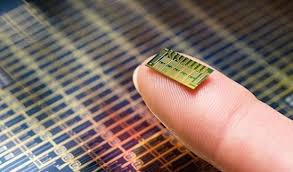میکروچیپ های پوشیدنی RFID (دکترای میکرو _ نانو )
پژوهشگر و نویسنده: دکتر ( افشین رشید)
نکته : به نوعی ترانزیستور های نازک لایه (TFT) که برای پوشیدن بر روی بدن مناسب هستند.
با این تکنولوژی می توان صفحه نمایش های LED را در الیاف لباس ها قرار داد و آن لباس می تواند تصاویر متفاوتی را مانند یک تلویزیون نمایش دهد.ابزار هایی مانند میکرو چیپ ها، بیوسنسور ها و باتری های بسیار کوچک ساخت لوازم بسیار کوچک پوشیدنی دیگر کار بسیار دشواری نیست. این لوازم کوچک می توانند به وسایل بزرگ تر Connect شوند و اطلاعاتی را که به دست می آورند برای آن ها ارسال کنند.
از گرمای بدن برای تأمین انرژی مورد نیاز سنسور های بر روی این لوازم پوشیدنی میتوان استفاده کرد. با انجام این کار دیگر نیازی به قرار دادن باتری در درون این وسایل نیست.
ترکیب میکرو چیپ های هوشمند و پارچه های هوشمند نانو
در فناوری پوشیدنی های نانو الکترونیک پارچه های هوشمند را می توان به دو دسته مختلف تقسیم کرد : 1- زیبایی و 2- بهبود عملکرد . نمونه های از زیبایی شامل پارچه هایی است که می توانند تغییر رنگ دهند. برخی از این پارچه ها با استفاده از ارتعاشات ، صدا یا گرما ، انرژی را از محیط جمع آوری می کنند و واکنش نشان می دهند. نوع دیگر پارچه های هوشمند برای افزایش عملکرد وجود دارد که تاثیر زیادی بر فعالیت های ورزشی شدید و صنایع نظامی خواهد داشت. این دسته، پارچه هایی هستند که به تنظیم دمای بدن کمک می کنند ،
در برابر باد مقاومت کرده و ارتعاش عضلات را کنترل می کنند که این کار باعث بهبود عملکرد ورزشکاران می شود. پارچه های دیگر برای لباس های محافظتی برای حفاظت از خطرات شدید محیط زیست مانند تابش و اثرات مخرب پرتوی خورشید توسعه یافته اند.
نویسنده: دکتر (افشین رشید )





